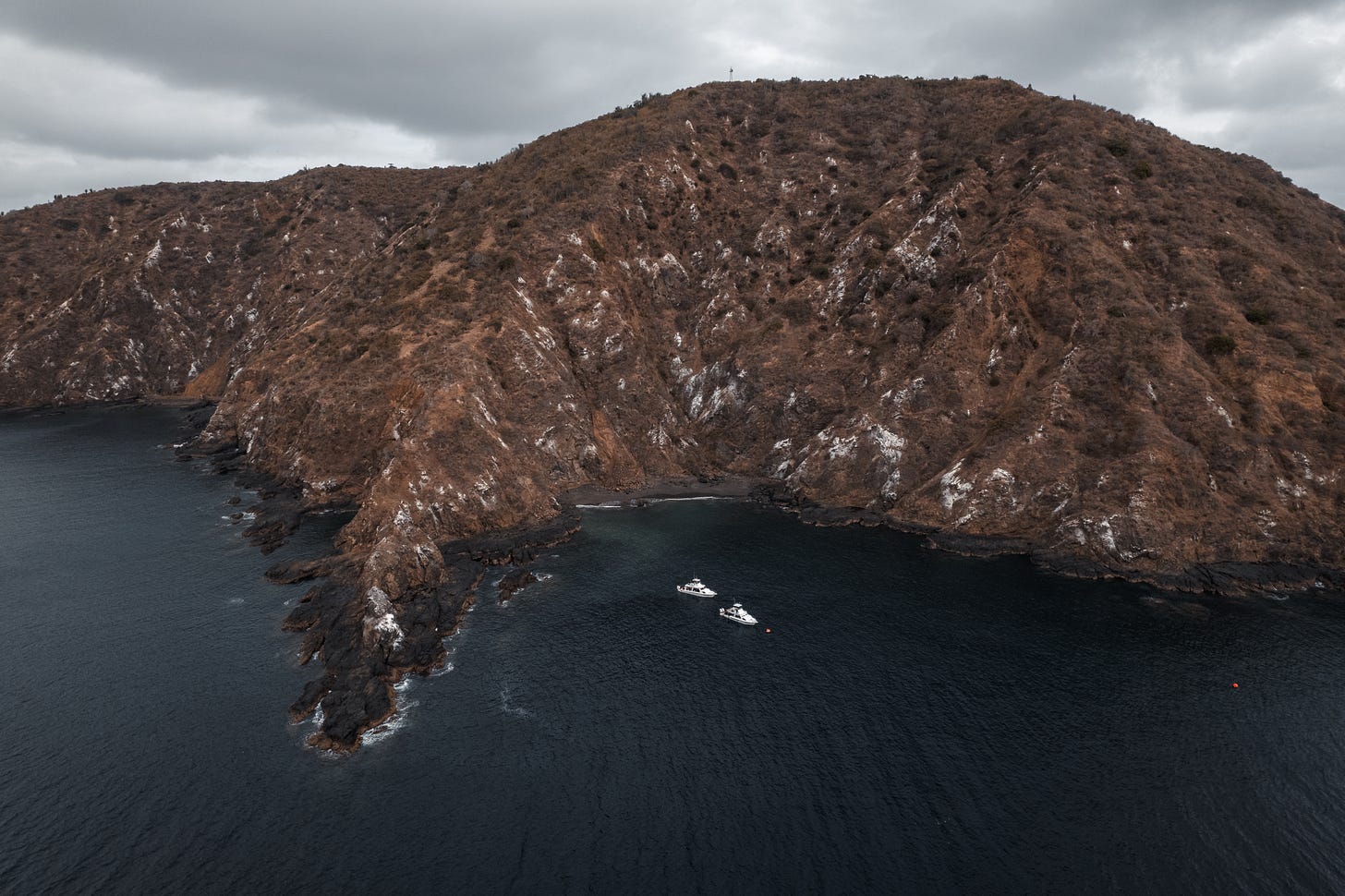TL;DR*: I didn’t see any mantas. If you’ve been following the news the past few weeks, you might have seen some stories about the extreme el Niño cycle this year. This balmy kink in the Pacific tradewinds makes for unusually warm ocean currents, and its knock-on effects have been causing a crash in seal and penguin populations in Galapagos, drought in Sri Lanka, and the promise of a much warmer winter right here in Minnesota. It also kept the giant oceanic mantas away from Isla de la Plata, at least for the past couple of weeks. That’s not to say I didn’t enjoy my time in Ecuador, but I won’t lie—a week with the Manta Trust research team and no mantas was more than a trifle disappointing.
Of course, my disappointment is insignificant compared to that of the 16 “fish nerds” who traveled from all over the world to study the giant mobulids in what is typically the Grand Central Station of these migratory rays. Isla de la Plata, 40 kilometers off the coast of the fishing village of Puerto Lopez, sits astride the Humboldt Current, the swirling cold gravy train of the Pacific. As this cold upwelling rises from the deep, it brings nutrients with it close to the surface. This in turn brings the megafauna: whales, whale sharks, and mantas. But this summer, surface water temperatures are running almost a full ten degrees Celsius warmer than usual, and that’s keeping the colder water locked deep and the mantas stayed away.
Keep reading with a 7-day free trial
Subscribe to SWIMPRUF to keep reading this post and get 7 days of free access to the full post archives.




